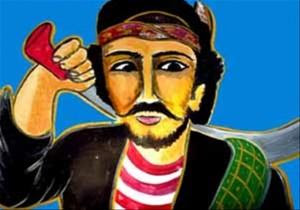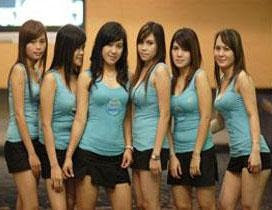Some years back I lived in Surabaya, a large city in East Java whose melodious name belies the rough and somewhat sleazy character of this industrial port city.
A bit like Liverpool really.
But one hell of a lot hotter.
From Surabaya, Madura is just a stone’s throw away, but only a very small number of tourists ever visit this poor and arid island compared to the hoards who make their way to the lush and tourist-friendly island of Bali, a good 8 hours drive to the east.
Just like Millwall supporters, noone particularly likes the Madurese and despite their large numbers (the Madurese are surprisingly the third largest ethnic group in Indonesia) they are highly under represented in virtually all aspects of Indonesian society including business and government.
The island’s poverty has forced many Madurese to seek their fortunes – or just mere survival – in places like Surabaya and in the rest of Java, and even as far afield as Kalimantan, where large numbers of Madurese were sent on infamous transmigration programs, only later to regret they had ever crossed swords (literally) with Kalimantan’s indigenous Dayak tribesmen.
I left for Madura on some ancient city bus, passing through some extremely dodgy areas of Surabaya, before we arrived at Tanjung Perak harbor from where I could get the rustbucket ferry across to Madura Island.
 The Madurese are well known for their hot headedness. Add to this the fact that they practice a custom of “blood revenge” called carok - in which punishment is delivered with the blow of a sickle-shaped knife, and you can understand why the Madurese have attained their fearsome reputation.
The Madurese are well known for their hot headedness. Add to this the fact that they practice a custom of “blood revenge” called carok - in which punishment is delivered with the blow of a sickle-shaped knife, and you can understand why the Madurese have attained their fearsome reputation.
I was once walking down Jalan Pemuda in Surabaya when I came across a large crowd of people gathered in a circle around some hapless chap who had been riding a motorcycle – seems he had been recognized by the Madurese person he had cheated or betrayed and had paid the ultimate price.
I didn’t bother to take a closer look – decapitated corpses are not my thing.
The Madurese are also noted for their Islamic piety and the island’s religious leaders are probably the most respected and influential figures in Madurese society.
But this is still Indonesia. And things are not what they seem. In fact, what goes on in Madura is so weird and so way off the radar screen, you’d be forgiven for thinking the boat had sunk in the Bermuda Triangle.
The very name of the island, for example, does not allude to some religious matter, but is taken from the words madu (honey) and dara (girl). But there’s more. Because these honey girls of Madura possess remarkable sexual skills called goyang goyang Madura, which is the girl’s ability to use her vital organ to squeeze and massage (so I’m told!).
The other thing about the Madurese is that despite being devout Muslims, they also practice various forms of sorcery and magic. Oh yeah, and they also love bullraces. A lot.
Anyway, at the small and noisy port we arrived at in Madura, I took a small public minibus to some God forsaken village where I heard traditional bullraces were going to be held, but there turned out to be no place to stay, and I was getting concerned as it was pretty late in the day, not long till sunset.
Luckily for me, though, a Madurese witchdoctor (dukun) – who also wanted to watch the bullraces – very kindly invited me to stay at his home with his beautiful young wife and two kids.
Now I’ve always known that these dukuns believe some seriously weird s**t, but nothing on Earth could have prepared me for what was in for store for me that night, suffice to say that people who practice black magic have some very strange ideas on what should be done to bring them luck (having said that, he made a killing the next day at the races!)
Ain’t things strange the way they work out?
Note: The results of NTD’s Third Chinese International Photography Competition have just been announced. After two months of review, the judges selected 48 winners out of over 6,000 entries. One of the winners is from Indonesia. It’s called “Bull Race” and is by Hubert Januar.
 The Location of the exhibition is:
The Location of the exhibition is: Calumet Photographic Gallery
2 W. 22nd Street, New York, NY, U.S.A.
Hours: 11/30-12/24, Monday-Friday 8:30am-5:30pm, Saturday 9am-5:30pm. From Nov. 30 to Dec. 24
The exhibition is free and open to the public.





Comments
Post a Comment